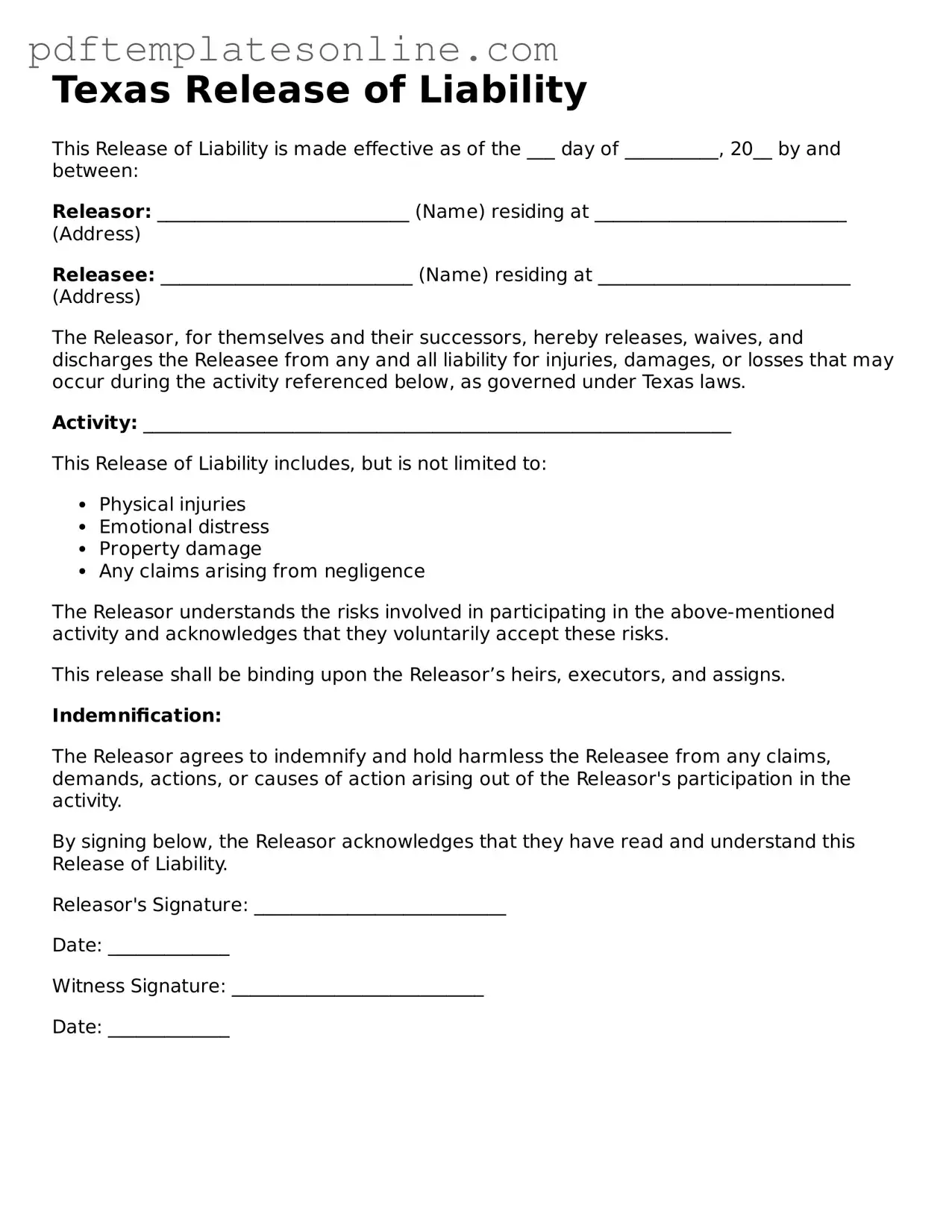Filling out a Texas Release of Liability form can seem straightforward, but several common mistakes often occur. One frequent error is not providing complete information. Individuals may leave out crucial details, such as their full name, address, or contact information. Omitting any of this information can lead to confusion or delays in processing the form.
Another mistake involves misunderstanding the purpose of the form. The Texas Release of Liability is designed to protect the party providing the activity from legal claims. Some individuals might fail to grasp this concept, leading them to either not sign the form or sign it without understanding the implications. This misunderstanding can result in unnecessary disputes later on.
People often forget to read the entire document before signing. Skimming through the text can lead to overlooking important clauses that outline the extent of liability being waived. This oversight may cause individuals to agree to terms they are uncomfortable with or did not fully comprehend.
Additionally, some individuals neglect to check for correct dates. A common error is signing the form without ensuring that the date is accurate. An incorrect date can raise questions about the validity of the release, potentially complicating matters if a claim arises.
Failing to witness the signature is another frequent mistake. In some cases, the form may require a witness to validate the signing process. Not including a witness can lead to challenges in enforcing the release if a dispute occurs later.
Moreover, people sometimes do not keep a copy of the completed form. After signing, it is essential to retain a copy for personal records. Without this documentation, individuals may struggle to prove that they signed the release, especially if a disagreement arises.
Lastly, some individuals may not seek legal advice when needed. While the form is intended to be user-friendly, complex situations may arise that warrant professional input. Not consulting with a legal expert can lead to misunderstandings and unintended consequences down the line.
